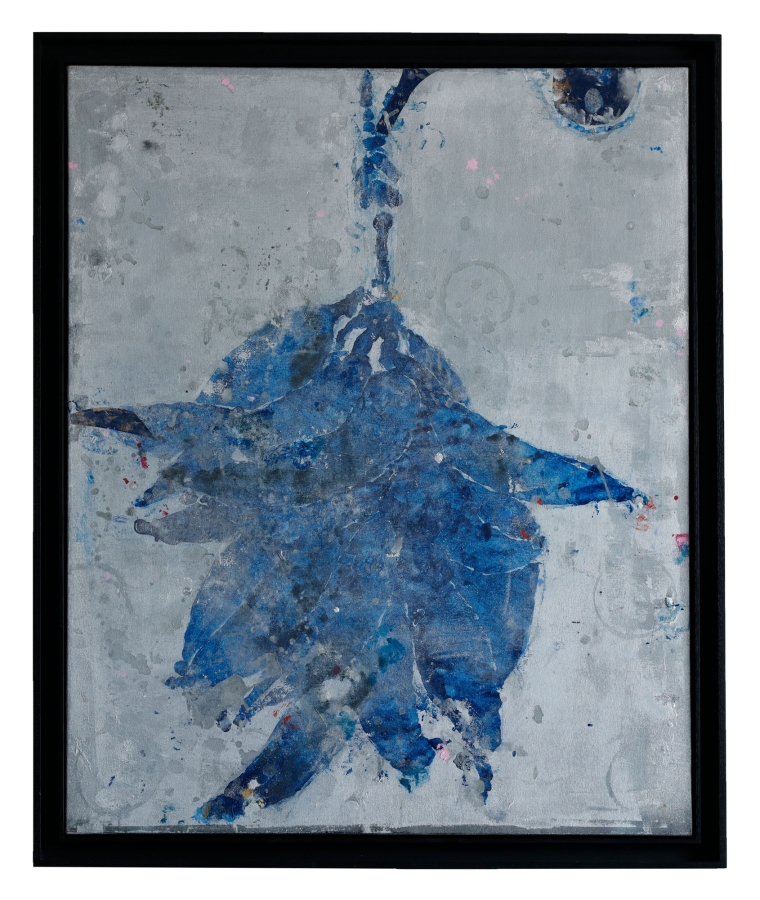
Artist’s Biography
José Camacho was born in 1968 and raised in Puerto Rico. Camacho pursued communication at the University Sagrado Corazón in 1985. Encouraged by his teacher, he then studied painting and drawing at the Art League in Old San Juan, PR. In 1987, at the age of 19, he moved to New Jersey and enrolled at Montclair State University. He studied painting and drawing with Miriam Beerman. While in college, Camacho assisted Puerto Rican artist Antonio Martorell in the installation of La Casa de Todos Nosotros at El Museo del Barrio, and also the installation of El Zócalo del Silencio at the University of Puerto Rico.
Camacho received a Bachelor of Arts degree from Montclair State University in 1991.
Camacho received various awards including a residency fellowship at Rutgers’ Center for Innovative Print and Paper in 2006, and the New Jersey State Council on the Arts Fellowship. His work has been included in many museum and gallery exhibitions. Currently, Camacho is the director of Midland Gallery in Montclair, New Jersey.

Interview
Artist:Jose Camacho
By Carol Real
Tell us about your story. How did you emigrate from Puerto Rico to New Jersey? What obstacles did you encounter?
When I was 19, I decided to move to New Jersey. After high school, I enrolled at the University of Sagrado Corazón in PR. I studied in the Department of Communication and Visual Arts. While there some of my art history teachers encouraged me to pursue art classes outside the university at the Art League in Old San Juan. Then, I studied painting and fine arts. Without knowing much about art or the requirements of being an artist, I realized I wanted to be an artist. As I advanced in my art history studies, I felt the need to move to the United States. This was so I could experience the works of the masters in the flesh, rather than reproductions in art history books. My desire to see art, and paintings in museums, prompted me to move here.
I didn’t face many obstacles coming here. Besides leaving my family behind in PR and dealing with nostalgia, my transition was pretty smooth. I had to adjust to the new culture and the difficulties of learning a new language. Studying at the university here in New Jersey became harder because I needed to work full-time to support myself. However, I got it done and earned my B.A. in painting from Montclair State University.
Who were your early artistic influences? Do you come from an artistic family?
My artistic influences are many. Some of my art teachers influenced me in many ways during my early years in Puerto Rico. When I moved to New Jersey, I studied painting and art theory with two teachers: Miriam Beerman and Jonathan Silver. They helped me forge my understanding and sensibility in art and the alchemy of painting.
As far as the conceptual aspects and aesthetics of painting, artists such as Anselm Kiefer, Jasper Johns, Pablo Picasso, and Francisco Goya have influenced me. Also, I started finding inspiration in other disciplines, such as music and literature. I used that inspiration to feed my creativity and my desire for painting. Being an immigrant, I naturally developed nostalgia for my homeland and culture. One of my biggest influences around that time was a Cuban troubadour and folk singer named Silvio Rodriguez. His music and poetry kept me grounded and inspired me to think of bigger and deeper things. It taught me how to transform nostalgia into art. It was the fuel I needed to keep going. Facundo Cabral was also very inspirational for me as well. Among other poets that sparked my creativity were Rainer Maria Rilke, Pablo Neruda, and Luis Pales Matos. There is also an obscure writer from PR named Ivan Silén that I find inspirational.
I have not met any other artists in my family. Although my family has many draftsmen and engineers, I have yet to find a fine artist.
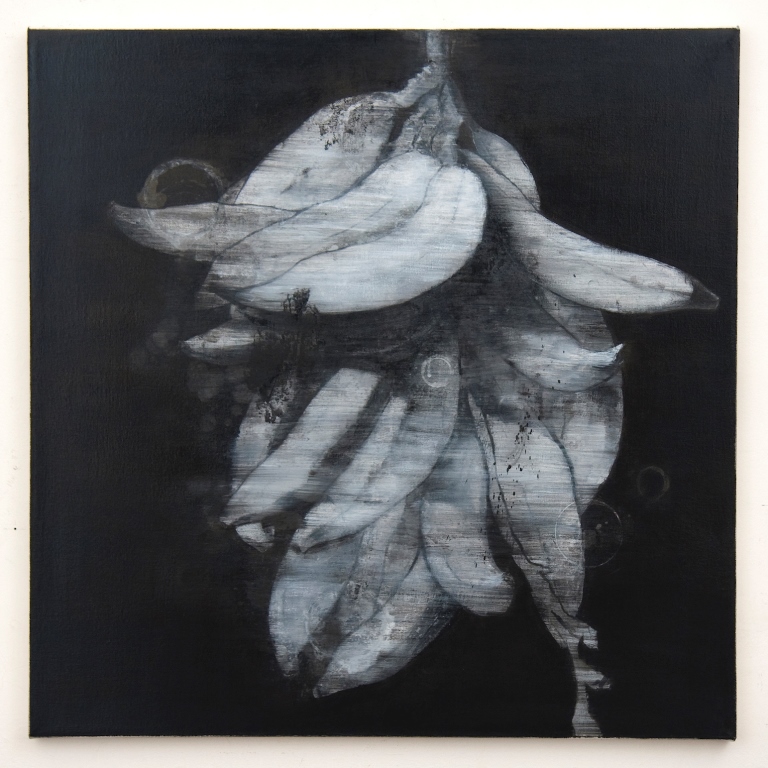
Oil on canvas, 30 x 30 in.
Ph courtesy of the artist
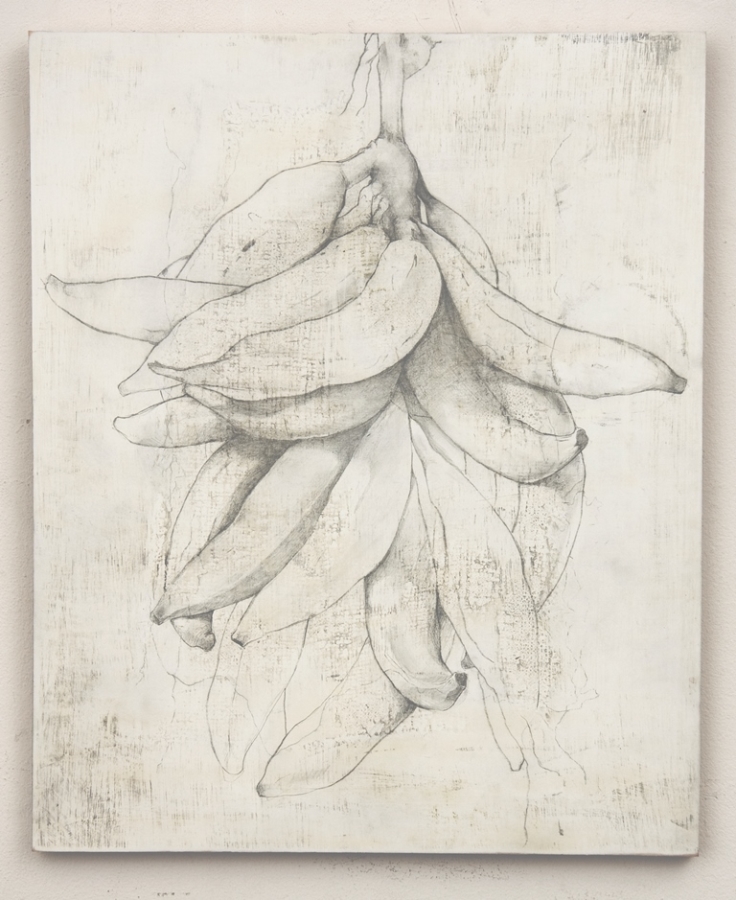
Graphite on oil-primed wooden panel 19 3/8 x 15 7/8 in.
Ph courtesy of the artist
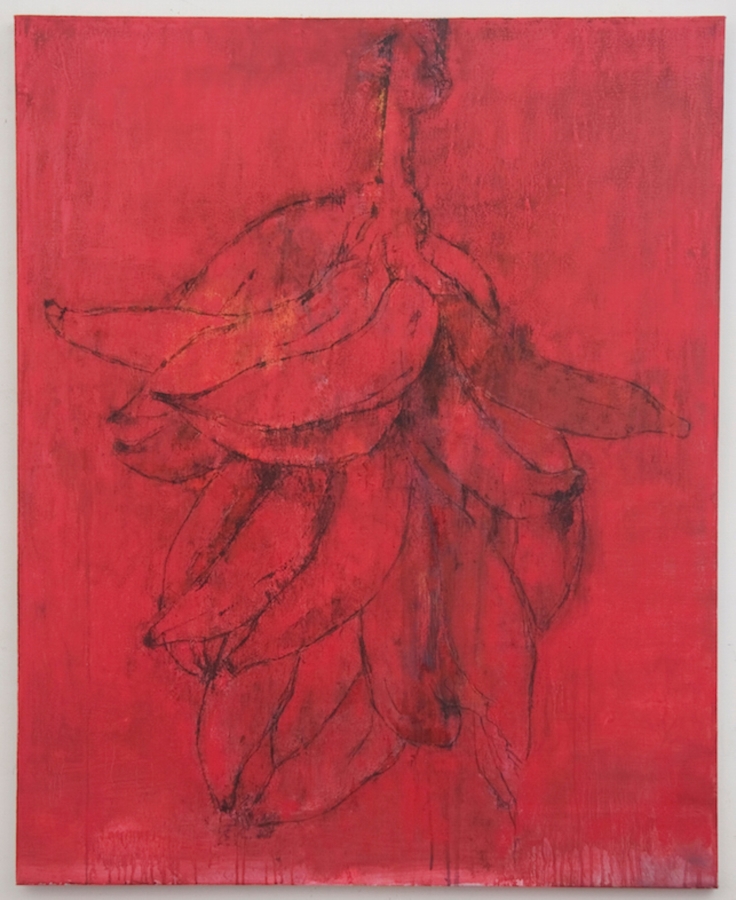
Oil on Canvas, 42 by 34 in.
Ph courtesy of the artist
What is the creative process that leads to the realization of your work?
Well, I’m interested in painting—painting that is aware of its constituent duality (i.e. metaphorical allusion and pictorial discourse). So my creative process is open and progressive and is in part what I like to think of as controlled randomness. Mixed media and collage have been the techniques in which my thought finds visual form. Ambiguity and automatism play a significant role in the process. Even though I’m interested in the agency of painting as the subject of the painting, I tend to add and/or bring a narrative to the work. This is to express and integrate into the work my experiences and my understanding of a given subject. So it is part of my creative process to find inspiration in my education, readings, and interpretations of life. I find myself experimenting and creating allegories within the material and the visual language of painting. The possibilities begin with the materials. During the process, I sometimes apply certain tricks that can result in a loss of control over the image, forcing me to let loose and evoke a notion of chance. I suppose humor plays a playful part in my creative process.
The plantain is a recurring element in your work. What meaning does it have for you?
In my work, I explore notions of beauty, memory, time, and nostalgia. I have a strong concern for the cultural problem and the colonized status of the island of Puerto Rico.
I started working with this idea of painting plantains as the main subject while studying the work of Puerto Rican artist Francisco Oller. I wanted to converse with Oller through painting. I specifically appropriated Oller’s oil on wood panel painting, a still life titled Platanos Amarillos (Ripe Plantains) from 1892-93. I wanted to explore and recreate the genre of still life in paintings and add a new context to this particular image. I repeated the same composition and reworked the original image, experimenting with different scales, media, colors, lines to add multiple layers of meaning within the works. Thus, I created new meditations that pay homage to their source. I started these paintings in 2010 and the first ones were titled Plantation. I had an exhibition with the same name curated by Mary Birmingham at the Visual Art Center in Summit, NJ in 2015. These first pieces explored a narrative that dealt with colonialism. Later on, the works became more esoteric and abstract; the narrative was more about natural law and alchemy. At the end of 2019, I began some new plantain paintings that I later finished during the quarantine period in 2020. These paintings continue the same narrative of alchemy and its relationship to painting throughout art history. Then I completed five large paintings and named them after the four elements and the ether.
Right now, I’m about to start another series on the same concept. This series will be oil on canvas grouped as a set of twelve plus one painting, 13 in total. This series of paintings will explore the theme of the Last Supper by Leonardo da Vinci and the mysticism in it.
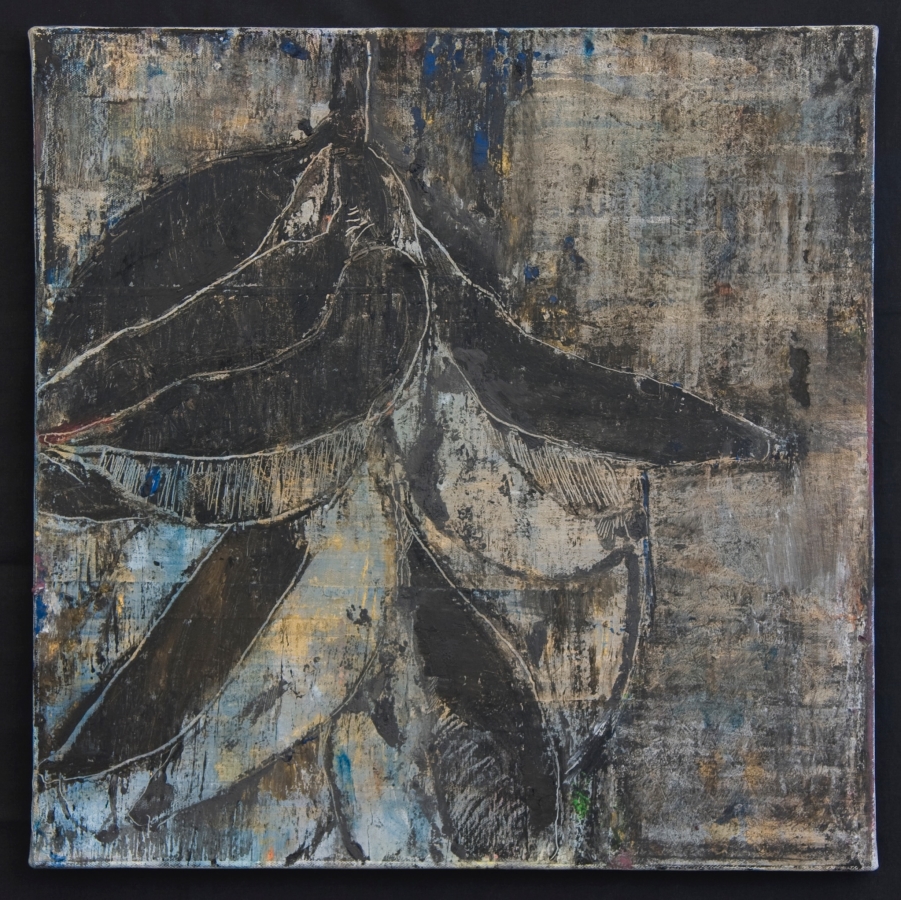
Oil on Canvas, 19 by 19 in.
Ph courtesy of the artist.
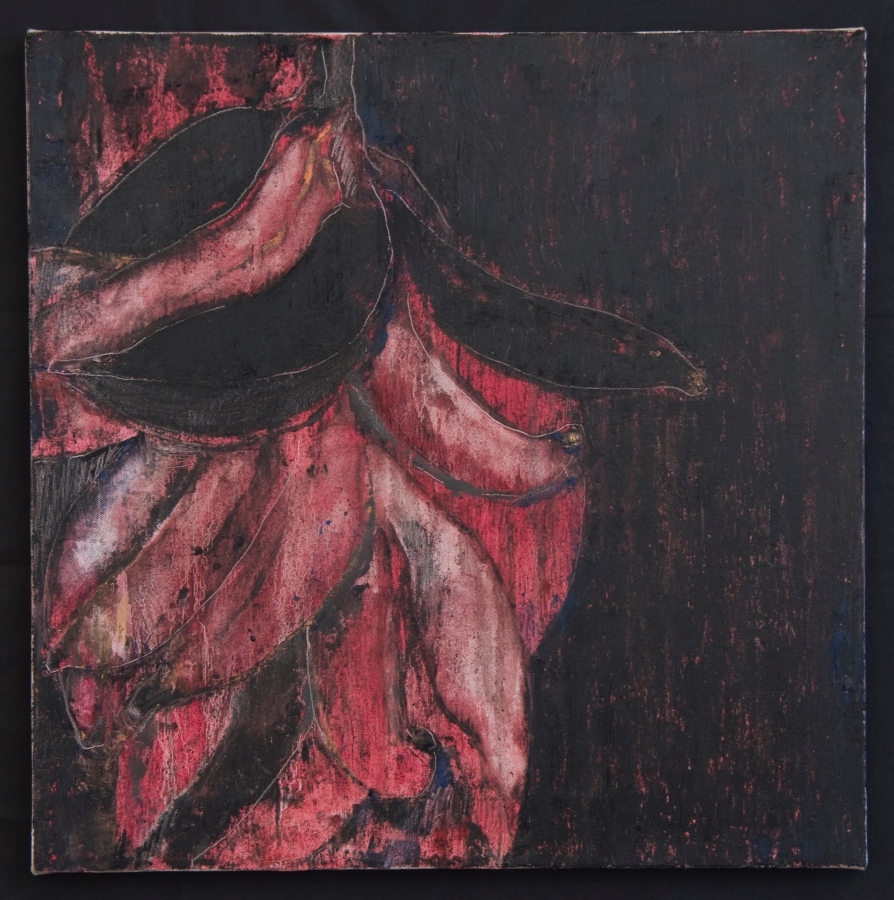
Oil on Canvas, 19 by 19 in.
Ph courtesy of the artist.
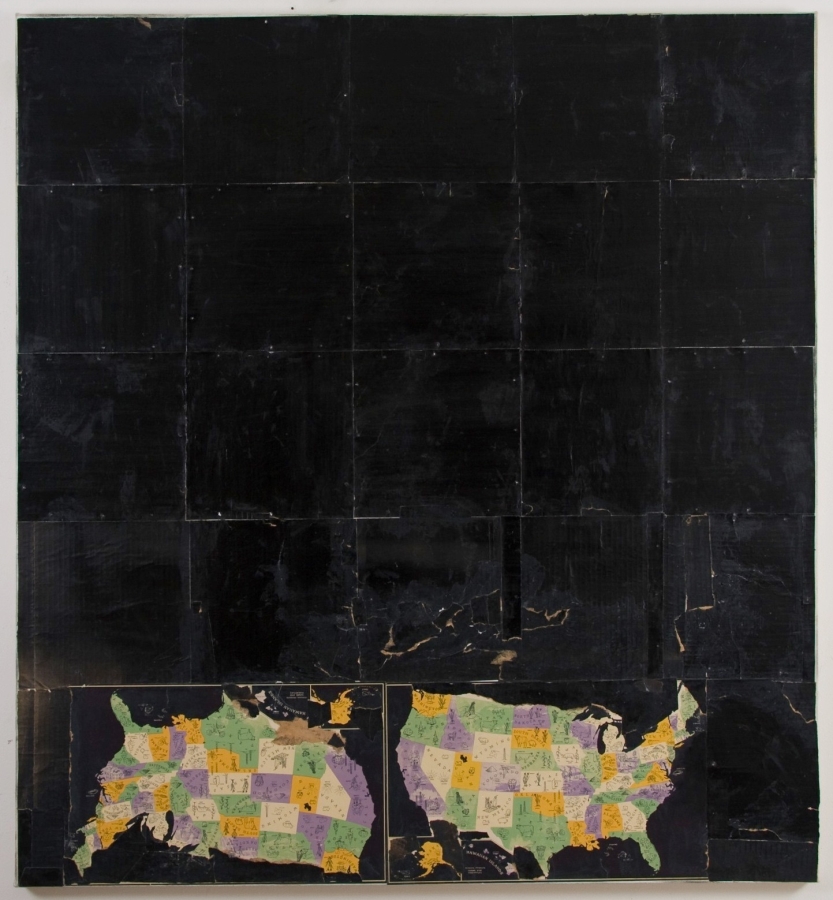
Enamel on cardboard mounted on canvas with antique maps, 52 by 48 in.
Ph courtesy of the artist
Other elements in your paintings are phrases and letters. What meaning do they have?
In some works, I retain the paper’s white surface, giving the text a ghostly appearance. The paper I used in those works often came from an older paper that was used in working on other oil paintings, and/or paper that has been stained or randomly soiled as a result of the art production process. I prefer paper that has
aged with visual information and has developed a studio patina.
For the darker paintings, graphite will be applied to darken and finish the surface. This part is extremely laborious. At some point, the canvas is removed from the stretcher bars and left on the floor or a table to collect physical evidence of my creative process inside the studio. In some of the last pieces, the text is becoming more intricate and harder to read as the text fades from being tainted with graphite and oil stains. I don’t need the text to be readable because I’m more concerned with the formal and abstract nature of the language. The whole process is ritualistic and tedious—somewhat akin to the ordeal of art making.
What is a day in the life of an artist like? What do you do after work?
It could be difficult to define an artist’s life. We don’t abide by society’s standard rules—meaning we play by working and work by playing. What I’m trying to say is that we make a living by playing with and scrutinizing our imagination, our fears, and our desires. We don't get to punch out, at least I don’t. I’m always thinking about paintings. Outside of the studio, there are other activities. I try to stay healthy and in shape by practicing some sports, occasionally meeting with some friends, and entertaining interesting conversations and dinners.
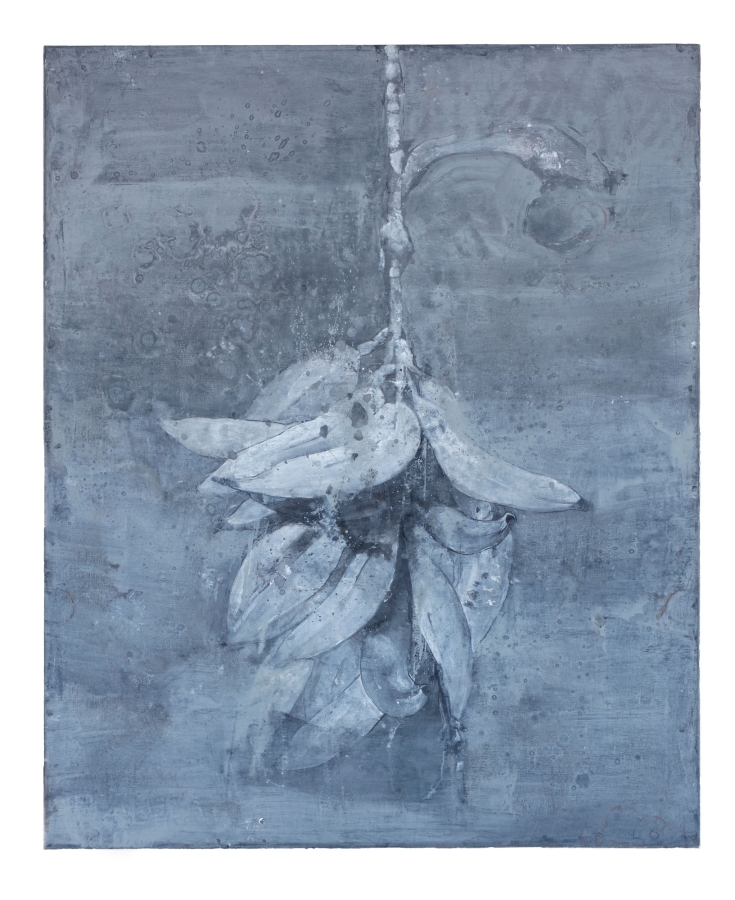
Acrylic and charcoal on canvas, 52 by 42 in.
Ph Anthony Alvarez
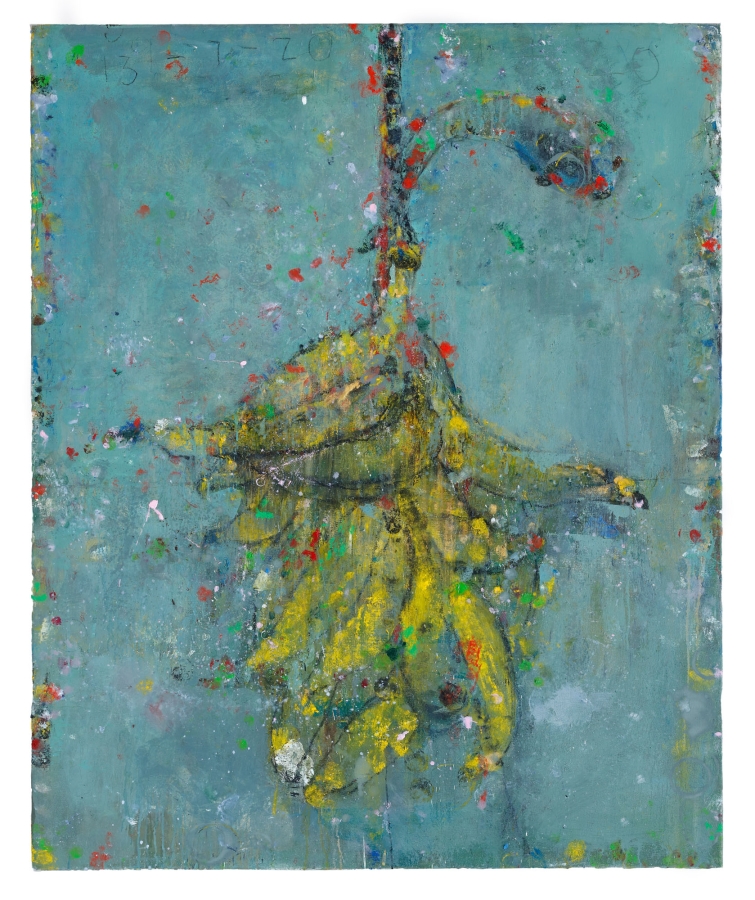
Oil on canvas, 52 by 42 in.
Ph Anthony Alvarez

Oil, enamel, and collage on canvas.
Ph Anthony Alvarez
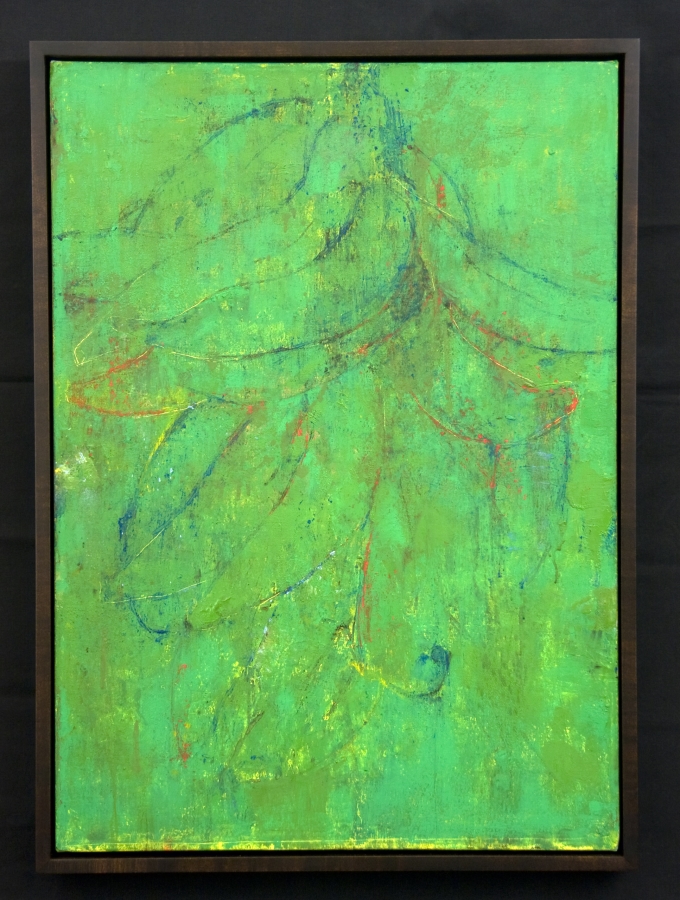
Oil on Canvas.
Ph courtesy of the artist.
What are you grateful for?
I’m grateful for my good humor. It’s a good balance and healthy receipt against the nonsensical. I’m grateful for my parents. They gave me the possibility of being.
I’m grateful for experiencing the gift of poetry through painting. I’m grateful for the people I have met in my life. They taught me about the person that I am, the person that I could be, and more importantly, the kind of person that I don’t want to be.
What would you like to do artistically?
As a visual artist and painter, I just want to paint—develop my craft and find my unique voice. I have some ideas and concepts that involve paintings and art installations, which are complicated to describe right now. The question is how to rise and generate the finances to execute and develop these different projects. The enterprise of art, throughout history, has always been a complex activity in a civilized society. And as with any other human enterprise, it requires finance for possibilities to exist and manifest themselves.
What are your “lines to live by”?
“Adopt new habits for yourself: consolidate your principles by putting them into practice.”
– Epictetus
“Pleasures, when they go beyond a certain limit, are but punishment.”
– Marcus Aurelius.
Editor: Kristen Evangelista
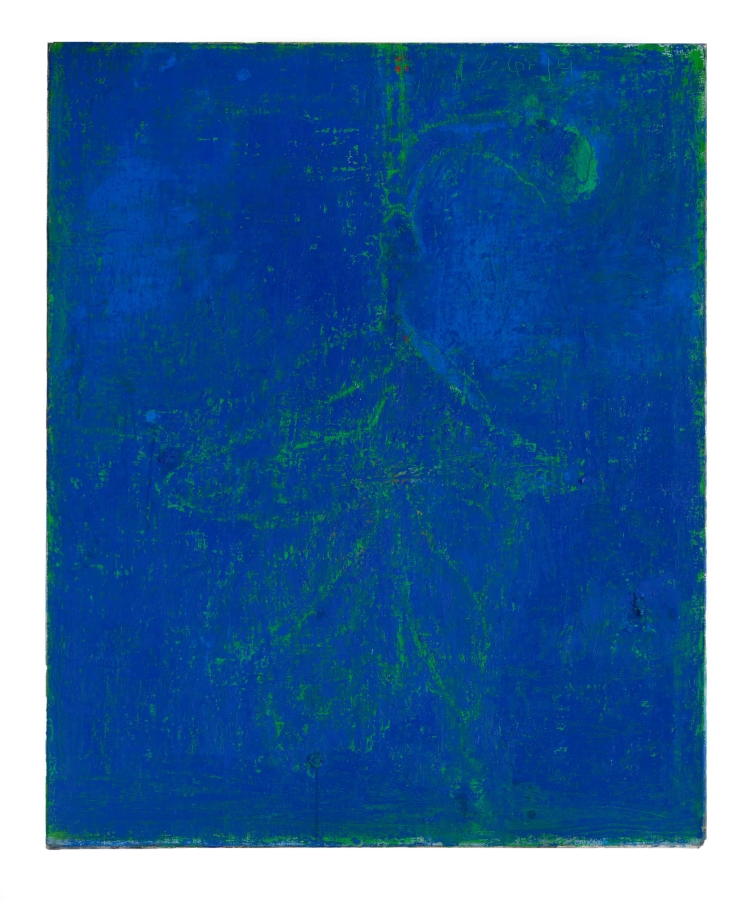
Oil on Linen, 52 by 42 in.
Ph Anthony Alvarez
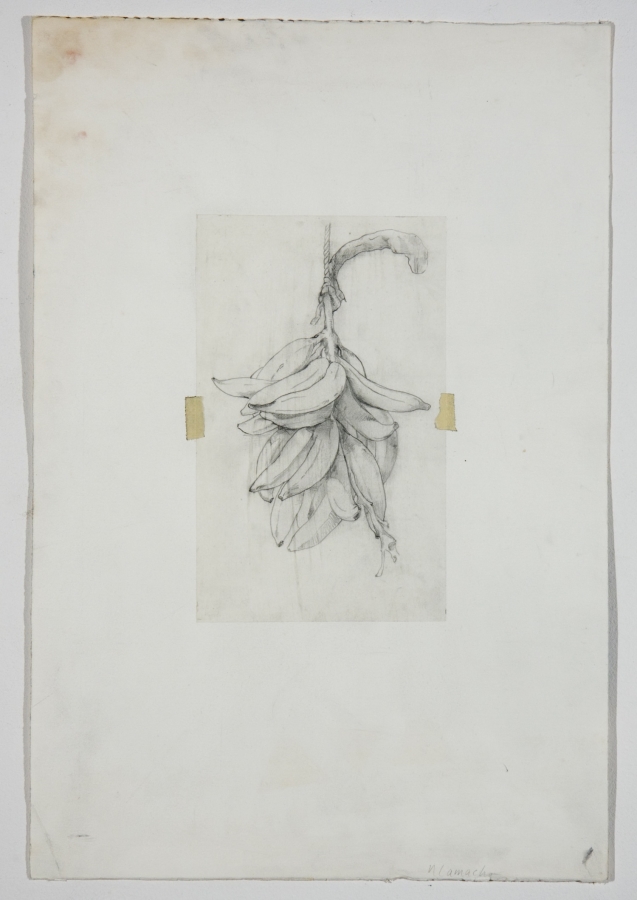
Pencil, masking tape on paper collage, 22 1/8 x 15 in.
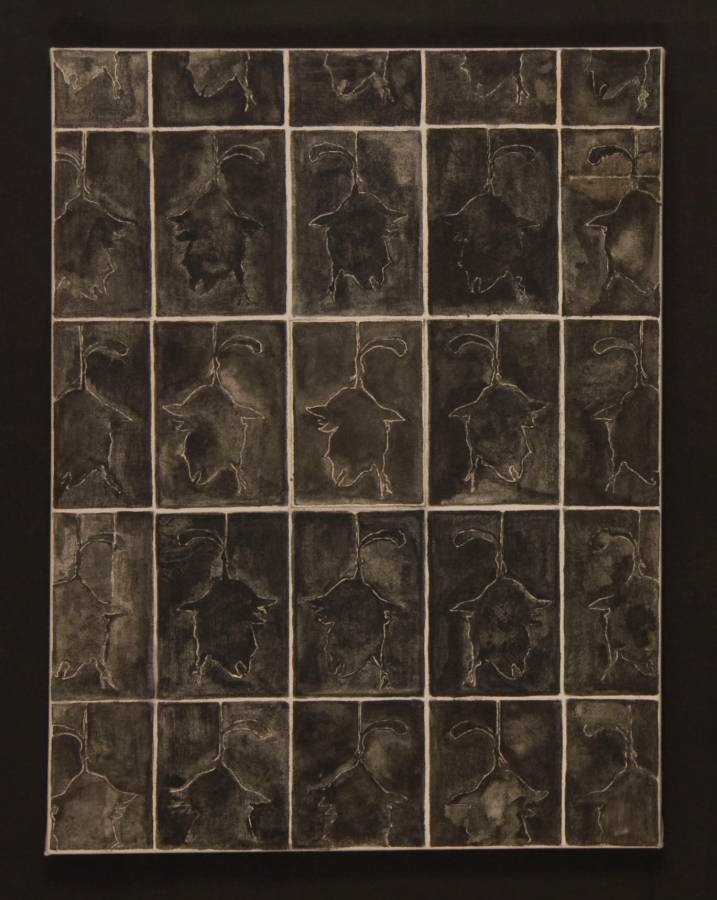
Oil on canvas, 25 1/8 by 18 1/8 in.
Ph courtesy of the artist
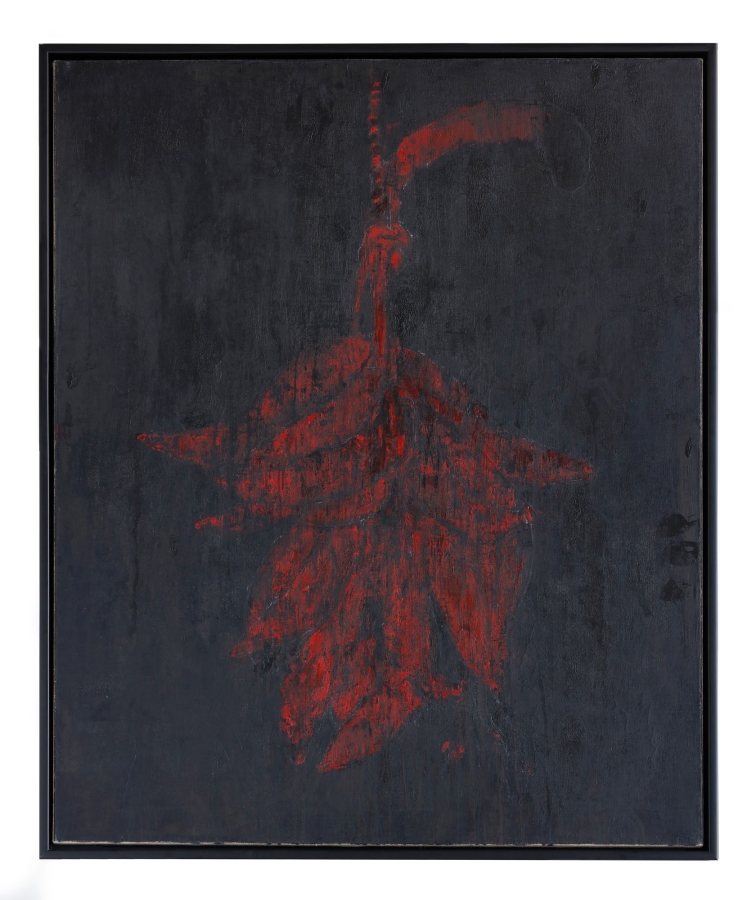
Oil on linen, 52 by 42 in.
Ph Anthony Alvarez
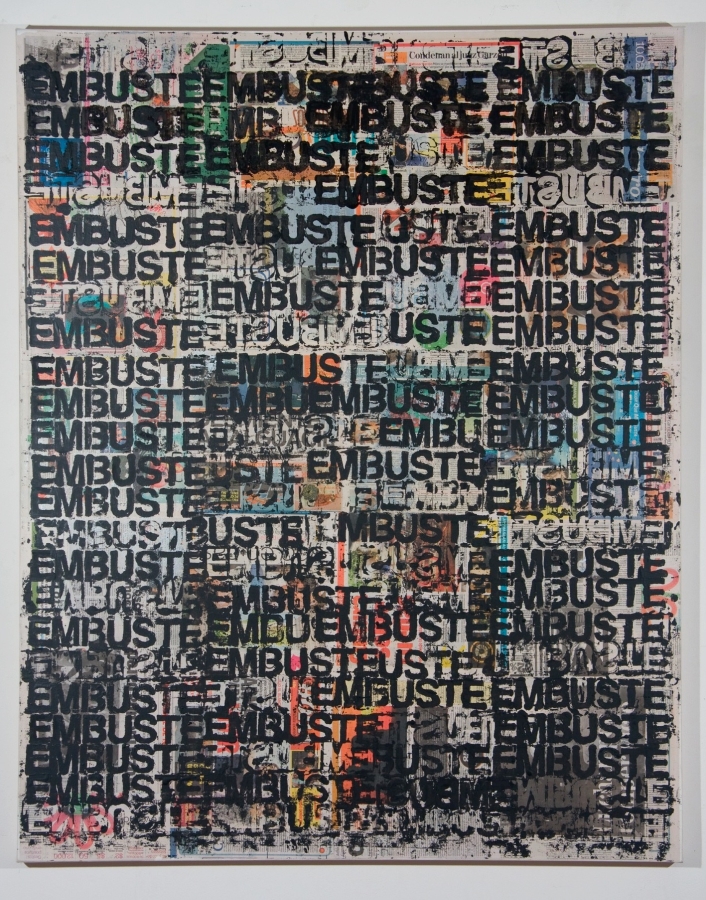
Mixed media on paper mounted on canvas, 60 by 48 in.
Ph courtesy of the artist
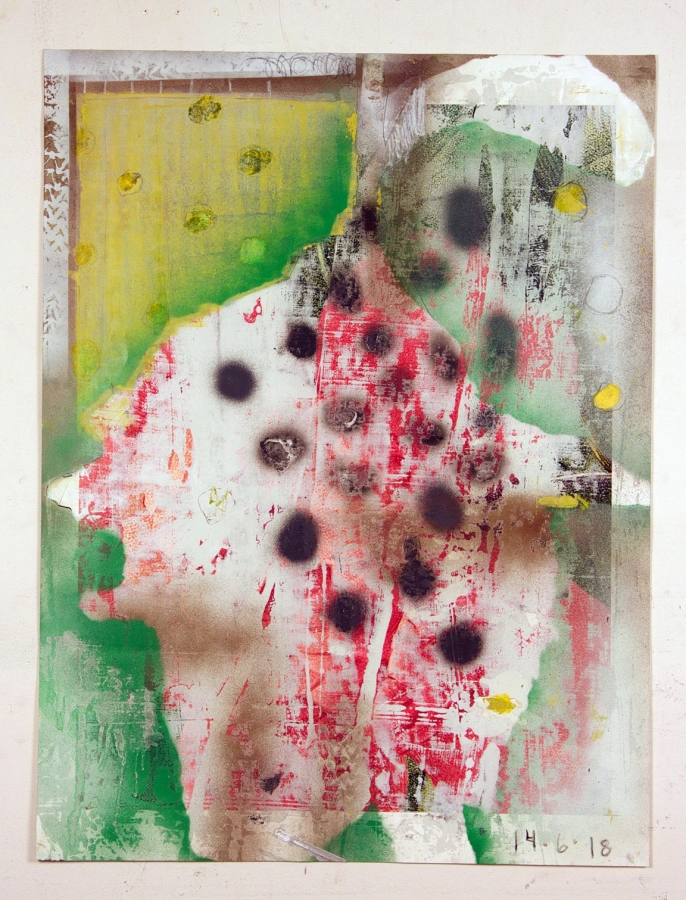
Mixed media on paper, 32 by 24 in.
Ph courtesy of the artist
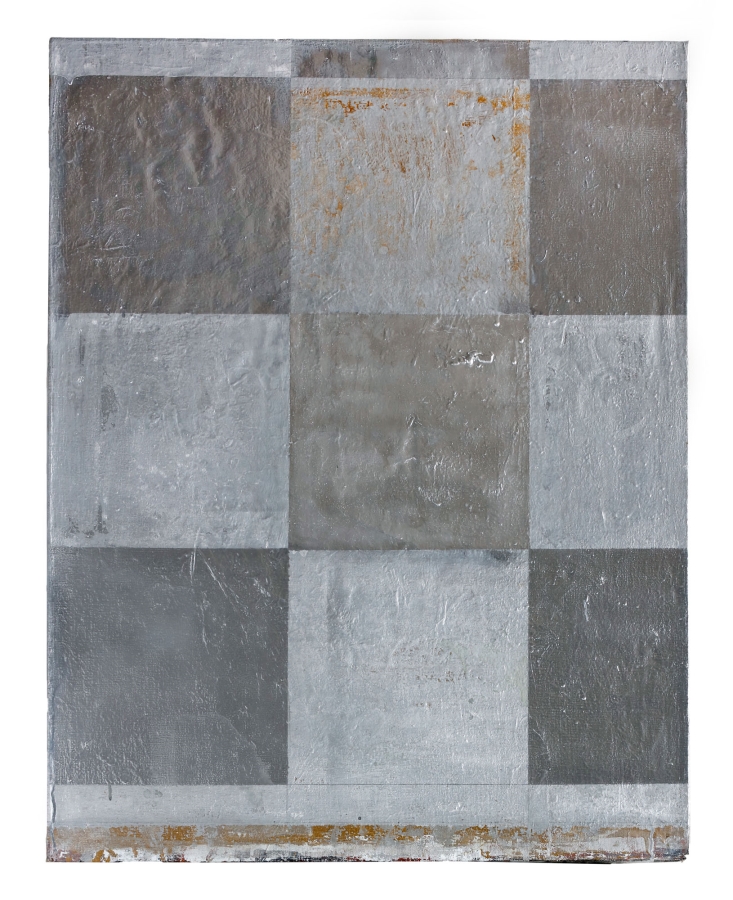
Oil and enamel on linen, 42 by 32 in.
Ph Anthony Alvarez
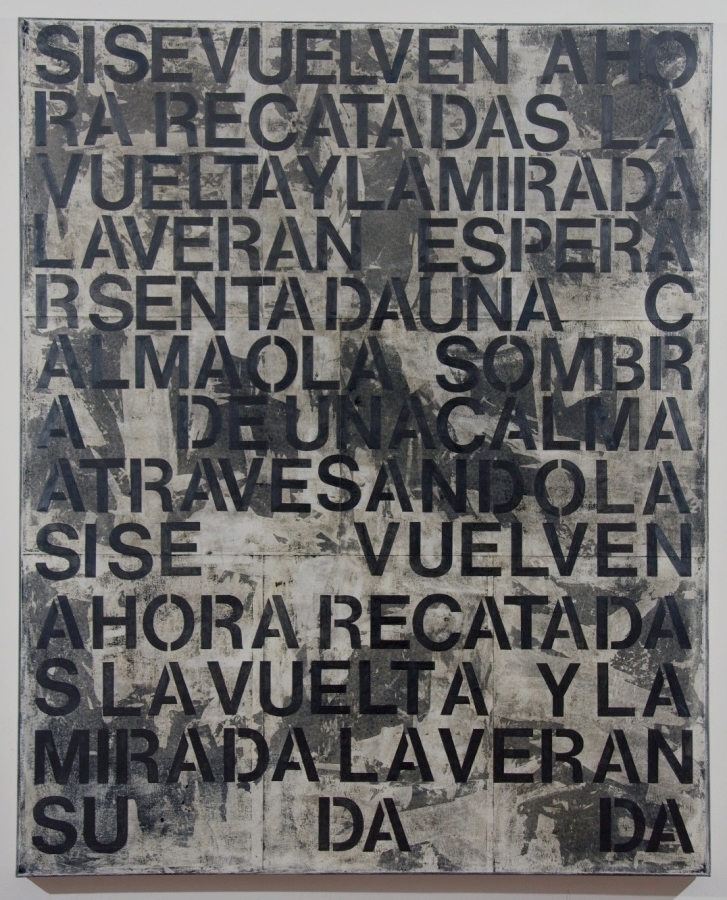
Oil stained paper and graphite mounted on canvas, 64 by 52 in.
Ph courtesy of the artist
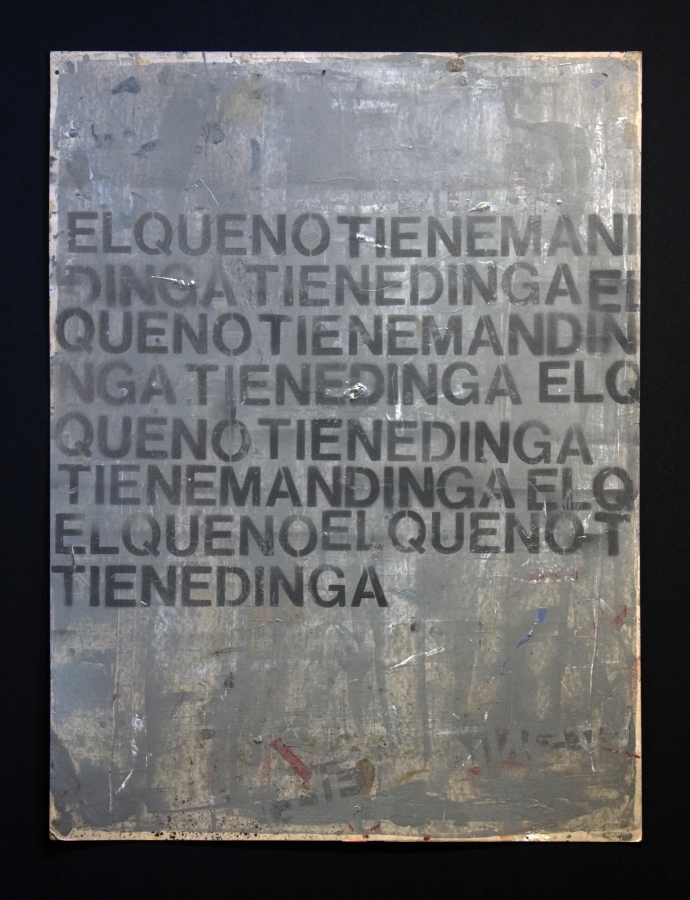
Mixed media on paper board, 40 by 30 in.
Ph courtesy of the artist
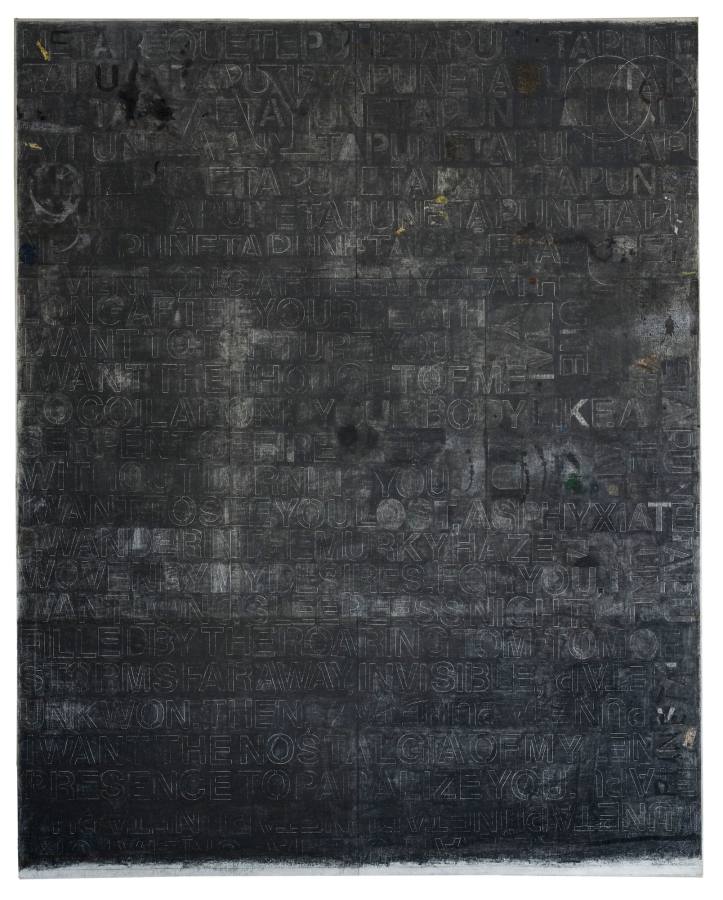
Graphite, mixed media on paper mounted on canvas, 64 by 52 in.
Ph Anthony Alvarez